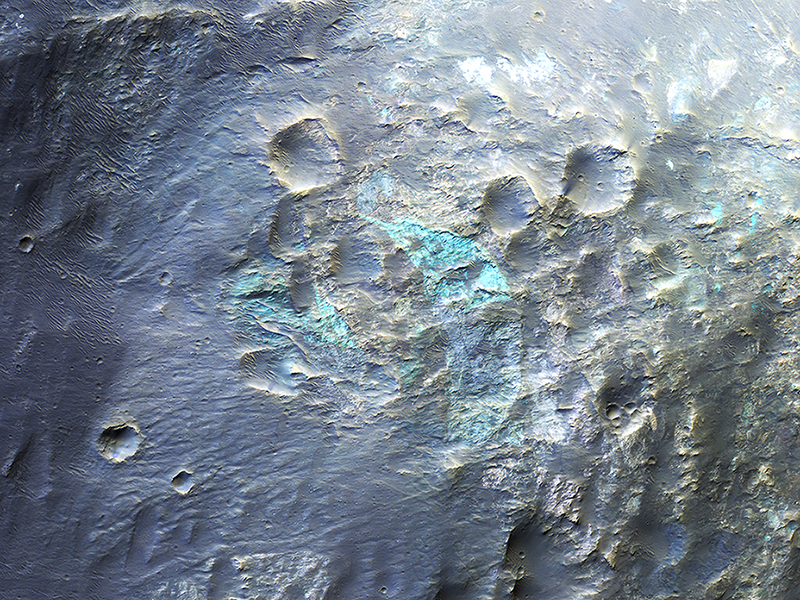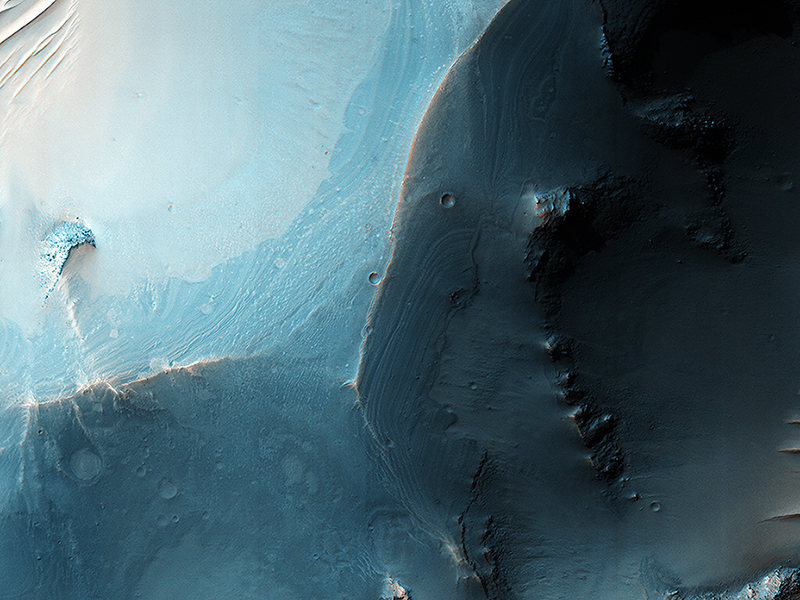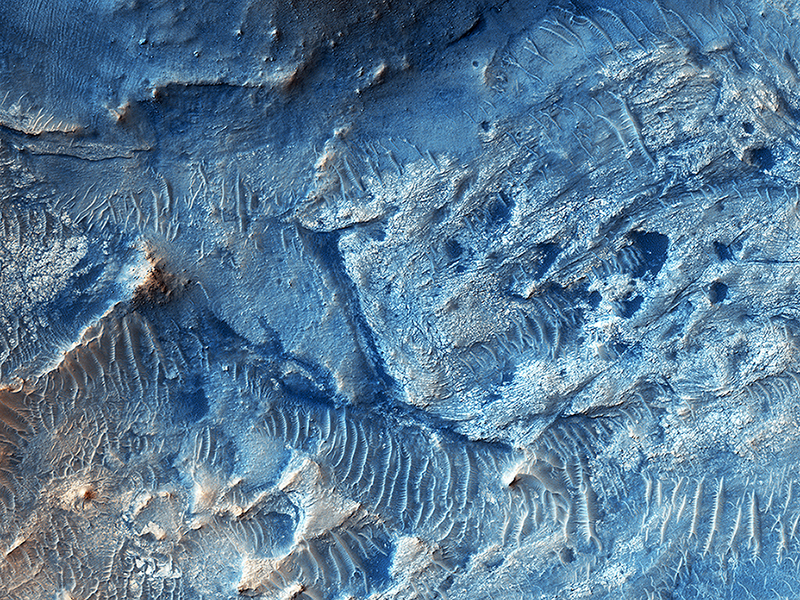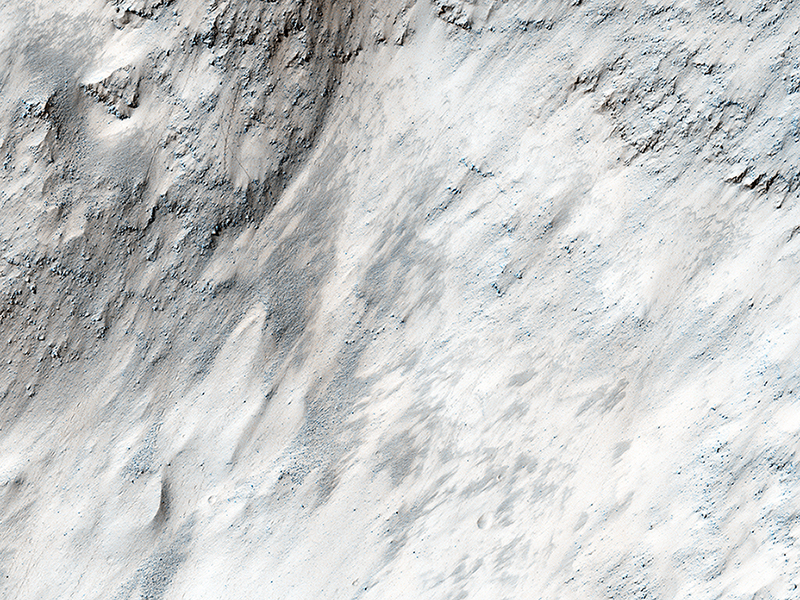Alfred McEwen wrote:Cubism in the Western Rim of Holden Crater (ESP_044495_1535) (HiClip)
This image covers the western rim of Holden Crater during northern summer. Since Holden Crater is in the Southern hemisphere of Mars, the shadows are long in northern summer (southern winter).
Where the crater rim is well illuminated, we can see blocks of material with different colors, representing diverse rock types that have been jumbled by impact processes. In places it resembles the early-20th-century art movement called cubism.
Alfred McEwen wrote:Faulted Layers in Collapse Pits (ESP_044497_1730) (HiClip)
This image shows a set of coalesced collapse pits in western Valles Marineris.
Fine layers are exposed in the walls of the pits, and in some places those layers are displaced by faults. What formed these layers, and what caused them to collapse into pits? Detailed study of this image and other data should help answer those questions.
This is a stereo pair with ESP_044141_1730.
Alfred McEwen wrote:An East Watershed for Jezero Crater (ESP_044517_1990) (HiClip)
Jezero Crater is candidate future landing site that contains sediments deposited by at least three ancient rivers.
This image was targeted to the eastern headlands of the river flowing in from that direction. In addition to complex erosional patterns, there are some good exposures of ancient bedrock, where we can see evidence for faulting and folding.
This is a stereo pair with ESP_044873_1990.
Alfred McEwen wrote:A Boulder Festival in Masursky Crater (ESP_044653_1915) (HiClip)
This image covers part of the chaotic terrain in Masursky Crater, and was targeted due to evidence that ejecta from Mojave Crater—to the south—may have modified the landscape. Mojave Crater may be the most recent large (more than 50-kilometer wide) impact crater on Mars, and produced some remarkable fluvial (water-carved) landscapes.
In Masursky Crater we see huge numbers of boulder trails. These appear as dashed lines produced by boulders tumbling down steep slopes, periodically gouging troughs in the ground. Why are there so many boulder trails here? Possibly the ejecta from Mojave Crater disturbed the surface and sent the boulders tumbling downhill.
Credit: NASA/JPL-Caltech/University of Arizona
<< Previous HiRISE Update



